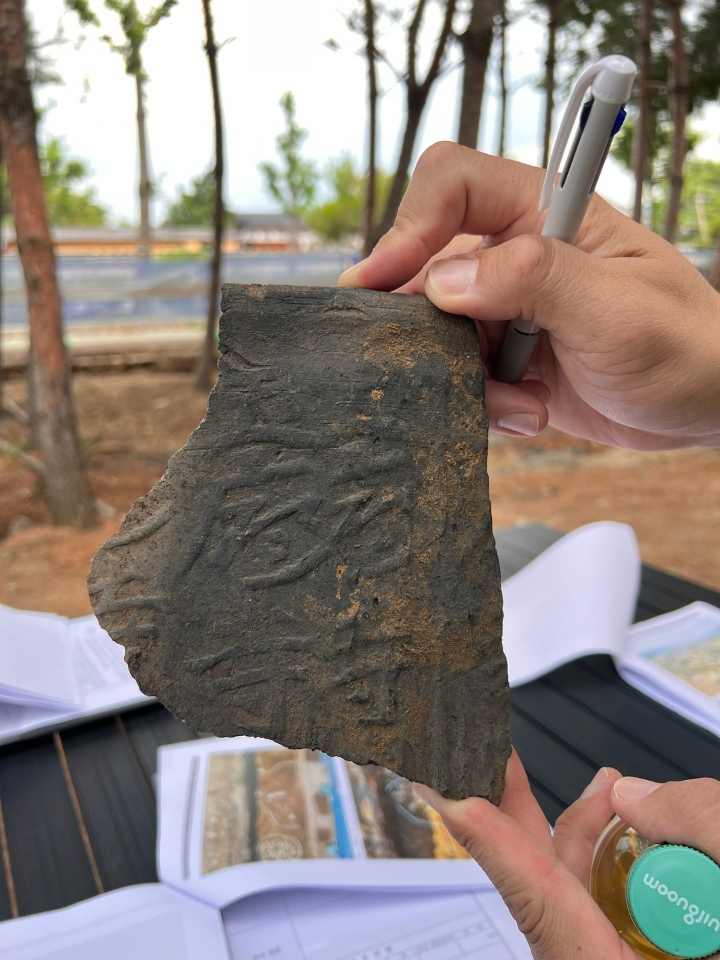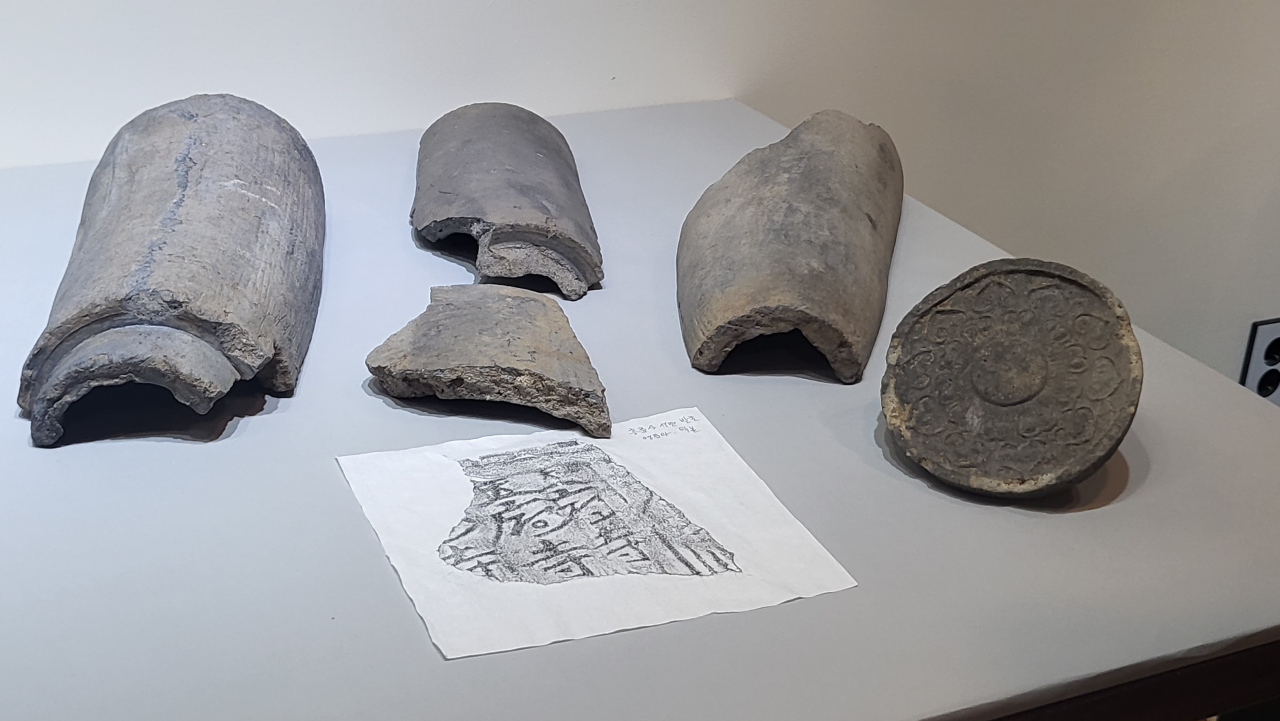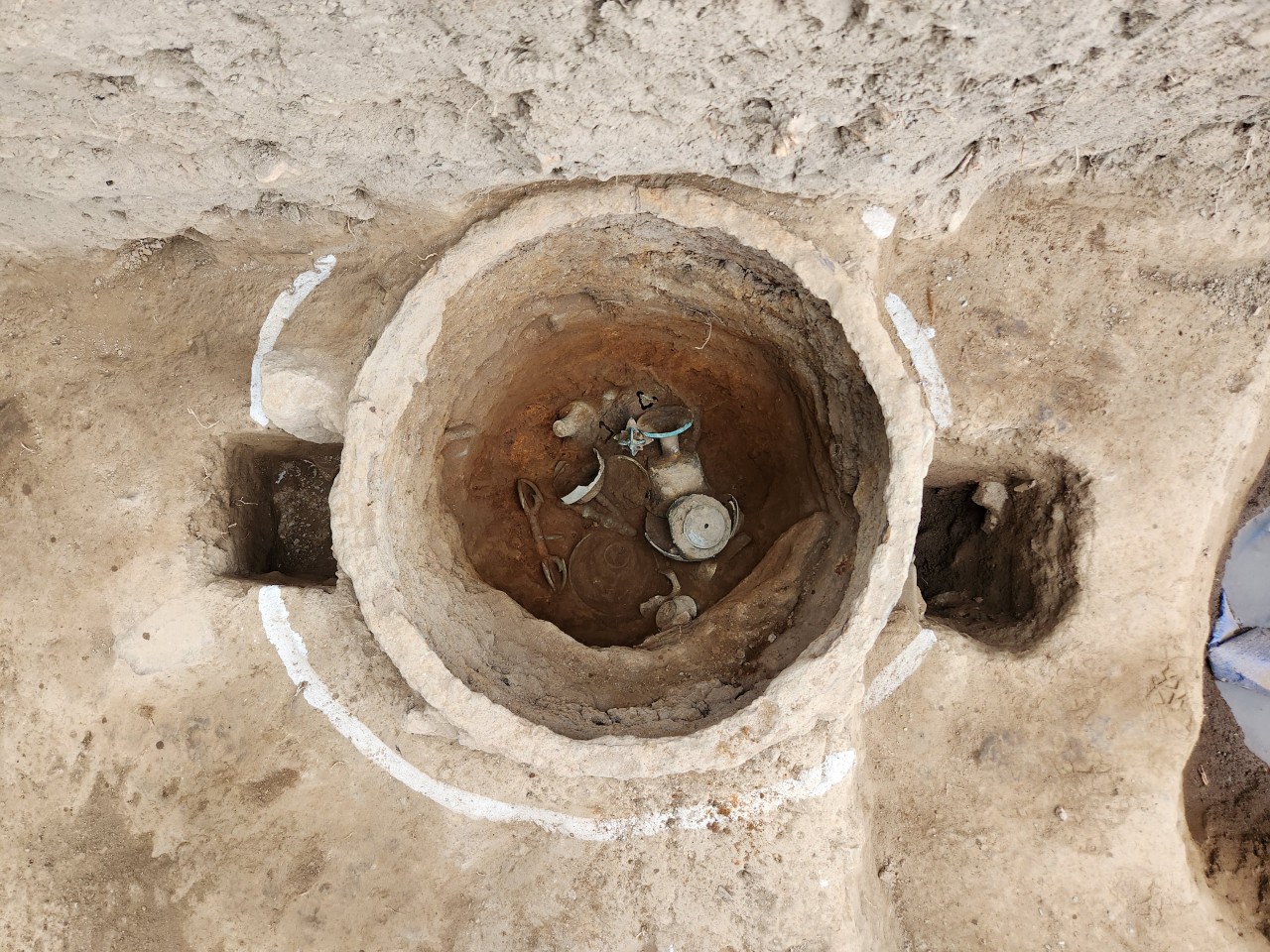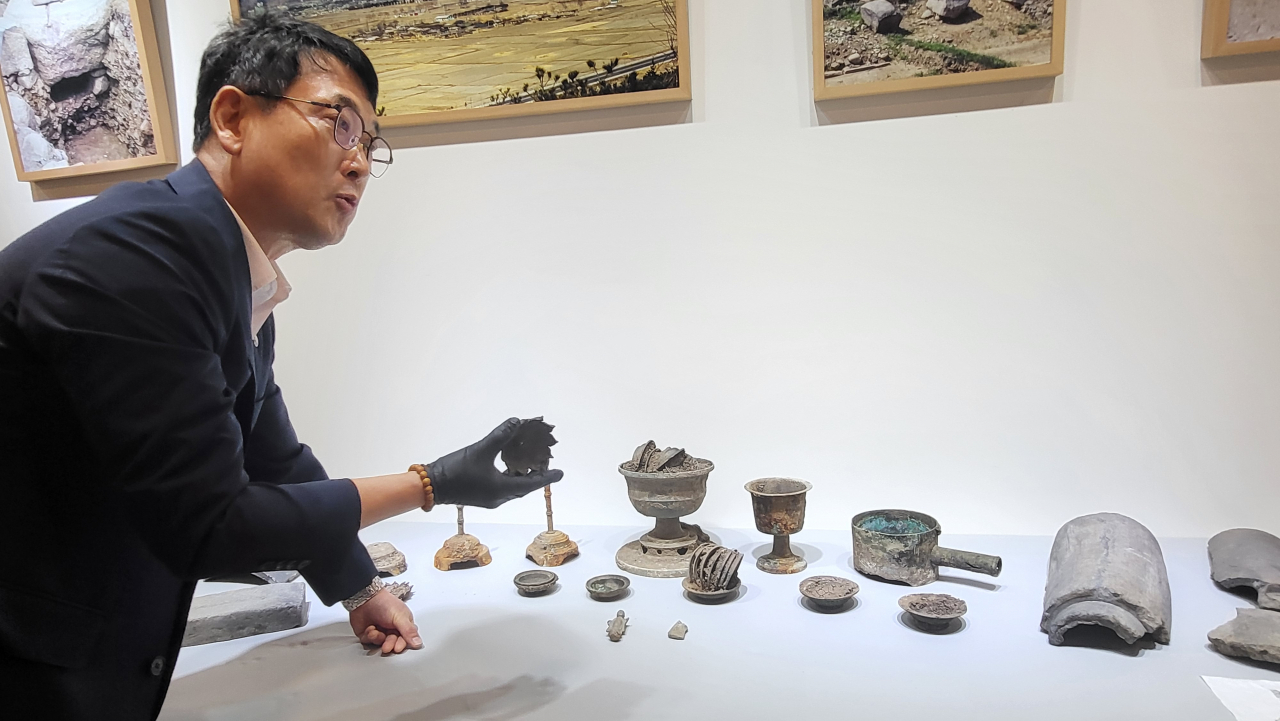 |
A researcher holds a roof tile fragment with "Yeongmyojisa" inscribed in Chinese characters on it, found near Heungryunsa Temple, Gyeongju, North Gyeongsang Province. (CHA) |
GYEONGJU, North Gyeongsang Province -- Remnants of roof tiles and Buddhist relics from the Unified Silla to the Goryeo periods were uncovered during sewage pipe construction in Gyeongju, North Gyeongsang Province, the Cultural Heritage Administration announced during a press conference at the Gyeongju National Research Institute of Cultural Heritage, on Tuesday.
Among the roof tiles, a tile fragment inscribed with Chinese characters, "Yeongmyojisa," meaning "Yeongmyosa Temple Site," was found some 22 meters west of present-day Heungryunsa Temple, built in the 1980s.
While Heungryunsa Temple is currently designated as a historical site, several roof tiles inscribed with "Yeongmyo" discovered over decades in the surrounding area had led many scholars and local residents to refer to the location also as the Yeongmyosa Temple Site.
"Discussions are underway to revise the current name (of the temple), and if we do so, it would enhance our understanding and examination of the city structure and landscape of ancient Silla," a senior researcher from the GNRICH told The Korea Herald. The official added that various studies suggest the original Heungryunsa Temple's precise location to be a kilometer away from its present site, at the Gyeongju Technical High School.
 |
Roof tiles found some 22 meters west of Heungryunsa Temple in Gyeongju. "Yeongmyojisa" is inscribed on the smallest fragment in the center. (Kim Hae-yeon/ The Korea Herald) |
 |
A large iron pot with Buddhist relics inside was discovered some 22 meters west of today's Heungryunsa Temple. (CHA) |
During an investigation conducted June 7-14, a total of 54 artifacts were identified, including relics contained in a large iron pot.
The iron pot measures 65 centimeters in diameter and 62 centimeters in height and has four handles on the exterior. Inside, approximately 30 centimeters of soil mixed with small roof tile fragments concealed Buddhist offerings as well as bronze incense sticks, incense burners and candlesticks.
"The fact that the relics were piled up in a disordered state inside the pot indicates that they may have been hastily buried during a time of war," Choi Eung-chon, head of the CHA, said at the press conference.
 |
CHA Head Choi Eung-chon talks about one of the Buddhist relics found inside the iron pot, during a press conference held at the Gyeongju National Research Institute of Cultural Heritage, Tuesday. (Kim Hae-yeon/ The Korea Herald) |
Heungryunsa and Yeongmyosa were built in the 6th and 7th centuries, respectively, and are known to be two of the seven temples located in Silla’s "seven sacred forests," as mentioned in the “Samguk Yusa (Memorabilia of the Three Kingdoms).” Both temples existed up until the early Joseon era.
Artifacts will undergo a series of preservation processes at the GNRICH before they are presented for public viewing.





![[Weekender] Korea's traditional sauce culture gains global recognition](http://res.heraldm.com/phpwas/restmb_idxmake.php?idx=644&simg=/content/image/2024/11/21/20241121050153_0.jpg)

